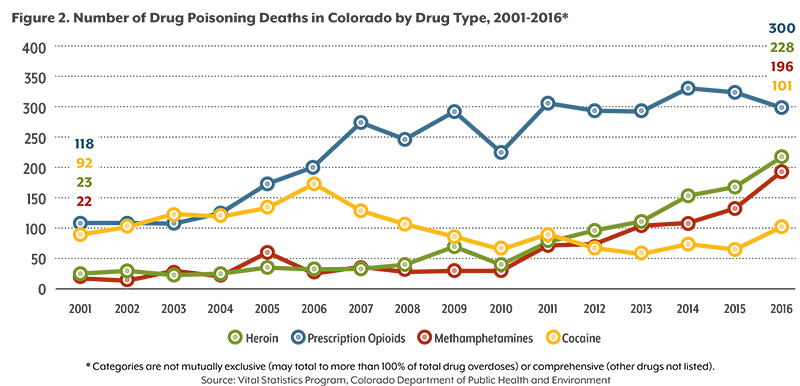Policy Options
The overdose crisis is the result of a complex set of dynamics, including the development, promotion and over-prescribing of potent legal painkillers, easy access to substances through the illegal drug trade, and diverse personal, social and economic pressures.
It can be difficult for policymakers to know where to target limited resources.
Will statewide programs and policies be most effective? Should the focus be on opioids or should other substances receive targeted attention? Should policymakers target regions with the highest numbers of overdose deaths — primarily the urban Front Range counties? Or should there be more attention paid to the highest rates of overdose deaths — mostly rural counties?
Colorado lawmakers are hard at work on some potential policy changes.
An interim committee focused on opioids and substance use developed six bills for the 2018 session. Five are still active as of March 2018. They range from requiring Medicaid to cover residential treatment for substance use to allowing school-based health centers to apply for funds to address substance use.
But a problem this complex will require multisector solutions extending beyond the legislature.
Medical professionals are changing prescribing practices and searching for alternative approaches to treating pain. Health policy experts are working to ensure people have access to the best treatment possible. Law enforcement agencies are addressing the illegal drug trade while also developing solutions for the growing number of people in their custody who are addicted to drugs. Social workers, schools and courts tend to the children and families struggling with the consequences of overdose deaths and substance use. And other community organizations are working on prevention and addressing the factors that lead people to seek substances in the first place.
Conclusion
Colorado lost 912 people to drug overdoses in 2016. Each person had a story. But each is part of a bigger picture as well. Deaths due to drugs are increasingly, and distressingly, common across Colorado. While each community is unique, no region is immune.
As Colorado confronts the drug overdose crisis, this analysis is a reminder of the thousands of Coloradans who have lost their lives to drugs in the past 15 years, and the families and communities that have been affected by substance use and addiction.
Methodology
The Colorado Department of Public Health and Environment’s Vital Statistics Program provided the data for this paper.
This analysis uses age-adjusted death rates (deaths per 100,000 residents). Because different diseases or causes of death may be more likely to occur in certain age brackets, it is helpful to age-adjust to prevent data from being biased simply because a population skews older or younger.
NOTE: CHI's previous version of this analysis, in 2016, was based on data from the CDC, which used information from the National Vital Statistics System to estimate stable rates of deaths due to drug poisoning for each county. CHI’s 2018 overdose maps are based on data from the CDPHE, which uses numbers of deaths reported to determine actual, rather than estimated, rates.






